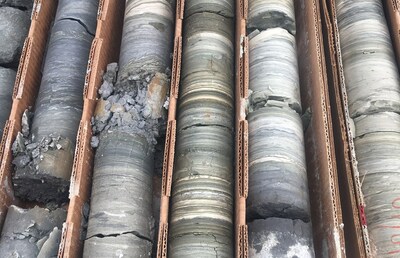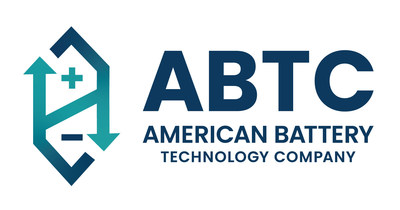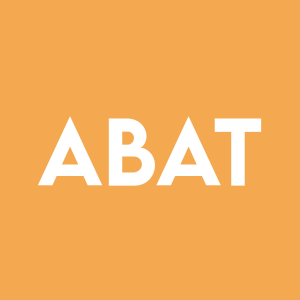American Battery Technology Company Announces Increased and Upgraded Lithium Resource to Measured and Indicated Classifications for One of the Largest Lithium Projects in the United States
Company continues to advance development of its Tonopah Flats Lithium Project, accelerating its path to commercialization of the domestic lithium supply chain
In December 2023, ABTC published its Initial Assessment for the TFLP which included data from its first two drill programs, and provided a preliminary technical and economic study of the performance of the resource. The company's Updated Initial Assessment incorporates data from its third drill program, which results in an increase in total resource size and an upgraded classification for significant portions of the resource.
- Overall increase in lithium resource size of
17% from the previous Initial Assessment - Approximately
54% of the resource is now classified at an upgraded classification as a Measured Resource or an Indicated Resource, representing an increase in statistical confidence of quantity and quality of resource in progression of development towards commercialization - TFLP continues to be one of the largest known lithium projects in the
U.S. , with total quantified resource of 21.15 million tons of lithium hydroxide monohydrate (LHM) - Deposit remains unexplored and open to the South, Southwest, and at depth, allowing for potential to expand the resource with further drilling in both the South and North claim blocks, however with a throughput of 33,000 tons LiOH/yr the current quantified resource already has a mine life of over 400 years
- Even without incorporation of improved data from the third drill program, the TFLP demonstrates attractive after-tax cash flows:
- Net Present Value of
$4.41 billion 10% discount rate - Internal Rate of Return of
65.8% - 2.4-year payback period of initial investment
- Net Present Value of
- Updated Initial Assessment provides necessary data and recommends next steps to further develop the resource, including the completion of a Pre-Feasibility Study
"We are proud to have both further increased the total size of this critical material lithium resource through our step-out exploration, and, through our strategic infill drilling to have evolved the majority of this resource up to the Measured and Indicated classifications," stated ABTC CEO Ryan Melsert. "This is an important milestone in the commercialization of this deposit, and combined with the current construction and installation of our integrated pilot system for the continuous demonstration of the manufacturing of battery grade lithium hydroxide from this unconventional lithium resource, we are excited to continue the rapid development and commercialization of these first-of-kind technologies."
American Battery Technology Company's Measured, Indicated, and Inferred Lithium Mineral Resource
Classification | Total kTons | Average ppm Li | Li kTons | LHM kTons |
Measured | 721,000 | 702 | 510 | 3,060 |
Indicated | 2,439,000 | 565 | 1,380 | 8,340 |
Measured + Indicated | 3,160,000 | 596 | 1,890 | 11,400 |
Inferred | 2,931,000 | 550 | 1,610 | 9,750 |
Total | 6,091,000 | 574 | 3,500 | 21,150 |
This updated initial assessment utilized data from ABTC's recently completed Drill Program III, with samples collected at TFLP from eight core drill holes with approximately 6,700 feet of drilling.
"The data from this third drill program's additional eight core holes has resulted in increased level of confidence towards pre-feasibility and bankable feasibility status," stated ABTC Chief Mineral Resource Officer Scot Jolcover. "I am pleased with the updated report and excited to continue accelerated development of this resource by furthering progress with the recommended next steps."
The Updated Initial Assessment maintains the previously-published Initial Assessment economic analysis and values, and notes that these values are conservative considering the improved updated classification of the resource in the Updated Initial Assessment. It is expected that with future updates the project economics will improve.
As noted in the December 2023 Initial Assessment, the TFLP has an estimated mine life of over 400 years with average annual production of 33,000 tons LHM. For purposes of the economic analysis, the Initial Assessment limits the project to a mine life of 50 years for approximately 643.2 million tons of claystone processed with an average of 3,815ppm LHM grade processed. With
Recommended Next Steps for Project Commercialization:
- Perform expanded bench scale metallurgy, pit optimization, and engineering analyses to further refine processing operations
- Further develop the resource to achieve a Probable and/or Proven Mineral Reserve
- Perform Hydrological and Geotechnical Drill Programs of TFLP property
- Complete remaining baseline environmental studies and National Environmental Policy Act (NEPA) review process
- Complete Pre-Feasibility Study
- Complete commissioning and commence operations of ABTC integrated pilot refinery system that will process TFLP claystone materials, and utilize this data from a continuously operating integrated pilot refinery to further optimize the design of the commercial-scale refinery
- Complete commercial-scale engineering design, construction, and commissioning for ABTC's commercial refinery with lead EPC firm Black & Veatch
The information contained in this press release is qualified in its entirety by reference to the complete text of the Updated Initial Assessment effective December 21, 2023, including but not limited to the mineral resource estimates and economic analysis. To read the full Updated Initial Assessment, visit: www.americanbatterytechnology.com_TonopahFlats_MI-Resource-Update.
Qualified Person
The mineral resource estimates presented in the ABTC Tonopah Flats Initial Assessment were performed by third-party, qualified person RESPEC, LLC and were classified by geological and quantitative confidence in accordance with the Securities and Exchange Commission (SEC) Regulation S-K 1300.
Initial Assessment
Initial assessment is a preliminary technical and economic study of the economic potential of all or parts of mineralization to support the disclosure of mineral resources. The initial assessment must be prepared by a qualified person and must include appropriate assessments of reasonably assumed technical and economic factors, together with any other relevant operational factors, that are necessary to demonstrate at the time of reporting that there are reasonable prospects for economic extraction. An initial assessment is required for disclosure of mineral resources but cannot be used as the basis for disclosure of mineral reserves.
Inferred Resource
Inferred mineral resource is that part of a mineral resource for which quantity and grade or quality are estimated on the basis of limited geological evidence and sampling. The level of geological uncertainty associated with an inferred mineral resource is too high to apply relevant technical and economic factors likely to influence the prospects of economic extraction in a manner useful for evaluation of economic viability. Because an inferred mineral resource has the lowest level of geological confidence of all mineral resources, which prevents the application of the modifying factors in a manner useful for evaluation of economic viability, an inferred mineral resource may not be considered when assessing the economic viability of a mining project, and may not be converted to a mineral reserve.
Indicated Resource
Indicated mineral resource is that part of a mineral resource for which quantity and grade or quality are estimated on the basis of adequate geological evidence and sampling. The level of geological certainty associated with an indicated mineral resource is sufficient to allow a qualified person to apply modifying factors in sufficient detail to support mine planning and evaluation of the economic viability of the deposit. Because an indicated mineral resource has a lower level of confidence than the level of confidence of a measured mineral resource, an indicated mineral resource may only be converted to a probable mineral reserve.
Measured Resource
Measured mineral resource is that part of a mineral resource for which quantity and grade or quality are estimated on the basis of conclusive geological evidence and sampling. The level of geological certainty associated with a measured mineral resource is sufficient to allow a qualified person to apply modifying factors, as defined in this section, in sufficient detail to support detailed mine planning and final evaluation of the economic viability of the deposit. Because a measured mineral resource has a higher level of confidence than the level of confidence of either an indicated mineral resource or an inferred mineral resource, a measured mineral resource may be converted to a proven mineral reserve or to a probable mineral reserve.
Probable Mineral Reserve
Probable mineral reserve is the economically mineable part of an indicated and, in some cases, a measured mineral resource.
Proven Mineral Reserve
Proven mineral reserve is the economically mineable part of a measured mineral resource and can only result from conversion of a measured mineral resource.
Pre-Feasibility Study
A preliminary feasibility study (or pre-feasibility study) is a comprehensive study of a range of options for the technical and economic viability of a mineral project that has advanced to a stage where a qualified person has determined (in the case of underground mining) a preferred mining method, or (in the case of surface mining) a pit configuration, and in all cases has determined an effective method of mineral processing and an effective plan to sell the product. A pre-feasibility study includes a financial analysis based on reasonable assumptions, based on appropriate testing, about the modifying factors and the evaluation of any other relevant factors that are sufficient for a qualified person to determine if all or part of the indicated and measured mineral resources may be converted to mineral reserves at the time of reporting. The financial analysis must have the level of detail necessary to demonstrate, at the time of reporting, that extraction is economically viable. A pre-feasibility study is less comprehensive and results in a lower confidence level than a feasibility study. A pre-feasibility study is more comprehensive and results in a higher confidence level than an initial assessment.
About American Battery Technology Company
American Battery Technology Company (ABTC), headquartered in
Forward-Looking Statements
This press release contains "forward-looking statements" within the meaning of the safe harbor provisions of the
![]() View original content to download multimedia:https://www.prnewswire.com/news-releases/american-battery-technology-company-announces-increased-and-upgraded-lithium-resource-to-measured-and-indicated-classifications-for-one-of-the-largest-lithium-projects-in-the-united-states-302038470.html
View original content to download multimedia:https://www.prnewswire.com/news-releases/american-battery-technology-company-announces-increased-and-upgraded-lithium-resource-to-measured-and-indicated-classifications-for-one-of-the-largest-lithium-projects-in-the-united-states-302038470.html
SOURCE American Battery Technology Company










